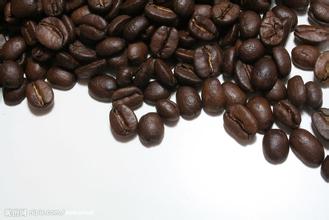Introduction to the producing areas of the characteristics of the grindness treatment method for the flavor description of Costa Rican Tarazhu Coffee
Costa Rica's law only allows the planting of Arabica varieties, and Robusta is "contraband" in its territory, which shows the importance Costa Rica attaches to the quality of coffee. The varieties cultivated in Costa Rica are mainly caturra and catuai, and there are also many varieties in the country, the most famous of which is the bourbon variety villa sarchi, which grows very well at high elevations and has strong wind resistance. It can also grow in barren soil, and it will grow better under shade trees. The most prominent feature is excellent sweetness and good acidity. Costa Rica's coffee skills are very high, regardless of breeding, planting or post-processing methods (especially honey treatment) can be used as a reference for various producing countries.
There are many excellent producing areas in Costa Rica, and the high-quality producing areas of Costa Rica have a common understanding of quality, that is, it requires the use of mature coffee fruits to ensure the production of high-quality coffee.
Generally speaking, a large amount of water is used in the post-processing of the picked coffee fruit, but the advanced production equipment in Costa Rica saves the use of water resources to the greatest extent, and a circulating filter is used to treat the waste water from washing coffee beans. let the waste water be purified into clean water to prevent pollution of the local soil environment.
After peeling, the peel and pulp of the coffee fruit are recovered as feed for livestock, or converted into organic fertilizer, as well as coffee bean dryer fuel. It can be said that in every process of coffee production, Costa Rica complies with the requirements of maintaining the natural environment.
Among the many excellent producing areas in Costa Rica, there is a famous producing area that stands out-Tarazu (Tarrazu), also known as Tarasu. Tarazhu is very famous in the world of boutique coffee and is one of the major coffee producing areas in the world. In the 2014 COE competition, of the 23 beans on the list, 17 came from Tarasu. Tarasu is located in the fertile volcanic region of Central America, which has a humid climate and fertile volcanic soil, abundant rainfall throughout the year, high altitude, and dense forest natural shade, providing a unique growth environment for coffee growth. Pesticides or artificial fertilizers are not used in the planting process. Nearly 95% of the coffee beans produced in Tarazhu Alpine are very hard beans (SHB), which generally grow above 1500 meters above sea level.
At present, the Tarazhu Cooperative has 26 member estates. Among them, Raminita Manor, which is one of the most famous coffee farms in Tarazu. La Minita produces about 1 million pounds of coffee beans a year, and after the entire estate produces coffee beans that are carefully selected to remove defects, only 15 per cent of the coffee beans can bear the mark of the Laminita estate, while the rest enter the coffee market. But the prices of these coffees entering the market are still higher than those of other beans produced in Central America. Raminita's strict management of all aspects of coffee production has established a world-class reputation and can be called a world-famous coffee farm.

Important Notice :
前街咖啡 FrontStreet Coffee has moved to new addredd:
FrontStreet Coffee Address: 315,Donghua East Road,GuangZhou
Tel:020 38364473
- Prev

Introduction to the Variety characteristics of Yunnan small Coffee Huaguoshan Coffee Flavor description treatment
The western and southern parts of Yunnan Province are located between the 15th latitude and the Tropic of Cancer. Most areas are 1000-2000 meters above sea level. The topography is dominated by mountains and slopes. Here, the land is fertile, the sunshine is sufficient, the rainfall is abundant, and the temperature difference between day and night is large. The unique natural conditions form the special taste of Yunnan small-grain coffee, which is rich but not bitter, fragrant but not strong, slightly fruity. Pu'er in the south and west of Yunnan
- Next

Guatemala Coffee Flavor Description Grindness Characteristics Variety Taste Introduction
Taste: bitter and fragrant, good taste. High-quality coffee is mellow and has a good quality sour, quite well received, is the best material for mixed coffee. Guatemala's extremely hard beans are known for their elegant, lively, sour, clean and odor-free, well-structured, sour green apple, berry, jasmine, orange peel, green pepper, sour fruit, chocolate, etc., and even smoky finish.
Related
- Detailed explanation of Jadeite planting Land in Panamanian Jadeite Manor introduction to the grading system of Jadeite competitive bidding, Red bid, Green bid and Rose Summer
- Story of Coffee planting in Brenka region of Costa Rica Stonehenge Manor anaerobic heavy honey treatment of flavor mouth
- What's on the barrel of Blue Mountain Coffee beans?
- Can American coffee also pull flowers? How to use hot American style to pull out a good-looking pattern?
- Can you make a cold extract with coffee beans? What is the right proportion for cold-extracted coffee formula?
- Indonesian PWN Gold Mandrine Coffee Origin Features Flavor How to Chong? Mandolin coffee is American.
- A brief introduction to the flavor characteristics of Brazilian yellow bourbon coffee beans
- What is the effect of different water quality on the flavor of cold-extracted coffee? What kind of water is best for brewing coffee?
- Why do you think of Rose Summer whenever you mention Panamanian coffee?
- Introduction to the characteristics of authentic blue mountain coffee bean producing areas? What is the CIB Coffee Authority in Jamaica?

